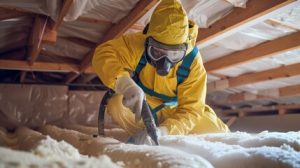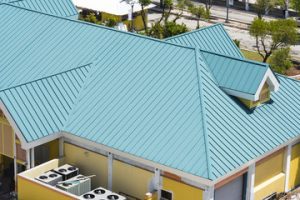Local map listing SEO can be a great way to generate new leads and increase sales for your business. It can also help you establish trust among your customers.

Google Maps listings are online profiles that display essential information about your business like location, phone number, and reviews. Having a verified Google Maps listing can improve your visibility in search results and help potential clients find you easily. Visit https://www.rankboss.com/ to learn more.
Local map listing is an excellent way to generate new leads and orders for your business. It allows potential customers to see your location, directions, operating hours, and website. It also displays reviews and ratings from previous customers. This information can influence their buying decisions and encourage them to contact you. Our digital marketing services can help you generate more calls and sales per day by improving your local maps ranking.
The Google Map Pack is a prime real estate in the local search results, and a high placement here can drive significant traffic to your business. To rank highly in the Google Map Pack, you need to employ a number of local SEO strategies.
Among these, one of the most important is optimizing your Google Business Profile. This involves adding your address, phone number, hours of operation, website link, business description, tags, photos, and more. Google also offers a slew of resources to help you fill out your listing.
Another key local SEO strategy is optimizing your website. This includes ensuring that your site is optimized for the keywords your target audience uses to find businesses like yours. Additionally, it is important to make sure your website is mobile-friendly. This will help you reach the growing number of users who are using smartphones to conduct local searches.
The Google Map Pack serves to help users find relevant businesses and easily locate contact information for their favorite local jaunts. It can also help businesses with omnichannel marketing strategies by driving more local and online traffic.
For example, if you’re visiting Austin and want to find a coffee shop nearby, a quick “coffee shop near me” search on Google will unveil many options. By getting your business to rank higher in the Map Pack, you’ll likely attract more users who are looking for a coffee shop and may even direct them to call your business directly instead of your competitor’s.
Our specialized team of digital marketers can handle everything from creating and claiming your business listings to establishing your brand’s presence on Google. We’ll ensure your business has a complete, accurate and engaging profile that drives more visibility and engagement on Google. From updating contact information and adding photos to managing reviews, we can take care of all the details that lead to a successful online marketing campaign.
It helps to increase sales
Local map listings are an important marketing tool for local businesses, especially for brick-and-mortar or service-oriented businesses. By providing an accurate profile with essential details, such as contact information and operational hours, these listings can help customers find you online and drive foot traffic to your business. Getting found on Google search results pages (also known as SERPs) is a crucial factor in generating new customer leads and increasing sales. Ranking in the local pack, or Snack Pack, helps your Phoenix small business stand out from its competition and attract nearby customers.
Google searches for businesses are often based on location, and many of these searches result in direct action by the consumer, such as visiting the store or calling to make an appointment. Local map listing services are designed to optimize your company’s website and online presence for these types of searches, resulting in higher rankings on search engine results pages (SERPs) and increased visibility.
A local map listing is a digital profile of your business that includes its name, address, phone number, and URL. These profiles are often displayed on search engines, such as Google Maps and in the “Snack Pack” of search engine results pages. They can also be used to promote your business on social media and in local directories. It is important to keep your local map profile up to date and to maintain consistency across platforms. Regular updates and consistent NAP information signal to Google that your business is active, trustworthy, and relevant in your community.
In addition to optimizing your Google Business Profile, local map listings can be used to boost your organic rankings by attracting traffic from potential customers in your target area. These visitors can then convert into paying customers through your website or directly at your store. In fact, studies have shown that local map listings can increase sales by as much as 61 percent.
Whether your business is a coffee shop, a bakery, or even a dentist’s office, local mapping can help you grow your business and attract more qualified customers. Skynet Solutions uses a variety of local SEO strategies to help your business rank in the local pack. These strategies may include claiming an existing business profile, optimizing your site for local keywords, and building a positive customer review profile.
It helps to increase customer satisfaction
Local map listings are crucial to a business’s online visibility and reputation. They help users find relevant businesses, learn about their services and products, and contact them. In addition, they help search engines categorize businesses correctly and rank them higher in local searches. Local map listings also provide a platform for customer reviews and questions, which can influence consumer purchasing decisions.
To increase your business’s visibility and customer satisfaction, you should ensure that your local map listing is complete and accurate. This includes listing your business name, address, phone number, and website URL. It also helps to update your business photos regularly. In addition, you should seek out reputable local directories to list your business and verify the information in your Google My Business profile. You should also encourage satisfied customers to leave positive reviews on your Google Maps profile.
Optimizing your Google Maps listing is the first step in attracting local customers. A well-optimized GMB profile will boost your local SEO and improve your chances of appearing in the coveted Google Map Pack, which takes up prime real estate on the search results page. Moreover, a well-optimized GMB profile will help your business stand out from competitors and attract more customers.
In addition to optimizing your Google My Business (GMB) profile, you should focus on acquiring positive customer reviews and maintaining an up-to-date service menu. You should also promote your business on social media to drive awareness and increase brand loyalty. It is advisable to hire a digital agency that specializes in local map listings.
Local searchers rely on Google Maps to get important information about the products and services they need. If your business is missing or incorrectly listed, these users may choose a competitor that has a more reliable online presence. Google Maps also provides valuable insights about customer needs and preferences. By leveraging these insights, you can create more targeted marketing campaigns and meet your customers’ expectations.
It helps to increase brand awareness
Local map listing is a critical component of your local SEO strategy. It ensures that people in your area can find your business, and provides you with a strong foundation for building brand awareness. Local listings also provide direct engagement with customers, allowing them to call, visit your website, or get directions from a single click. By optimizing your local map listings for keywords relevant to your niche, you can attract qualified leads who are more likely to convert into paying customers.
Creating and claiming your Google Business Profile (GBP) is a good place to start, but you should complete the full set of business details to ensure that search engines see your listing as complete and accurate. This includes adding a phone number, email address, website link, hours of operation, photos, and other relevant information. It’s also important to update your GBP regularly and be sure that your information is correct, as this will help improve your local ranking.
Another way to improve your local map listing is to embed it on your website. This will make it easier for visitors to contact you directly, and can also help you rank higher in local Google Maps searches. You can do this by creating a Google Maps listing for your business and then sharing the link on your website.
While online shopping has become a popular way to buy products and services, many people still prefer to shop locally for several reasons, including better customer support, quicker response time, and the inability to purchase certain items and services over the internet. In addition, local businesses are often more cost-effective than big-box stores.
Local map listings are a great way to increase your brand awareness and promote your products or services in a targeted manner. By using local map seo, you can attract more potential customers and generate more sales in a cost-effective way.
Local map listings also help in building trust and credibility for your business. People who are looking for a particular product or service will be more likely to choose your business if they can see your location on the map and read reviews about it. It is therefore important to encourage your customers to leave positive reviews and respond politely to any negative comments.








